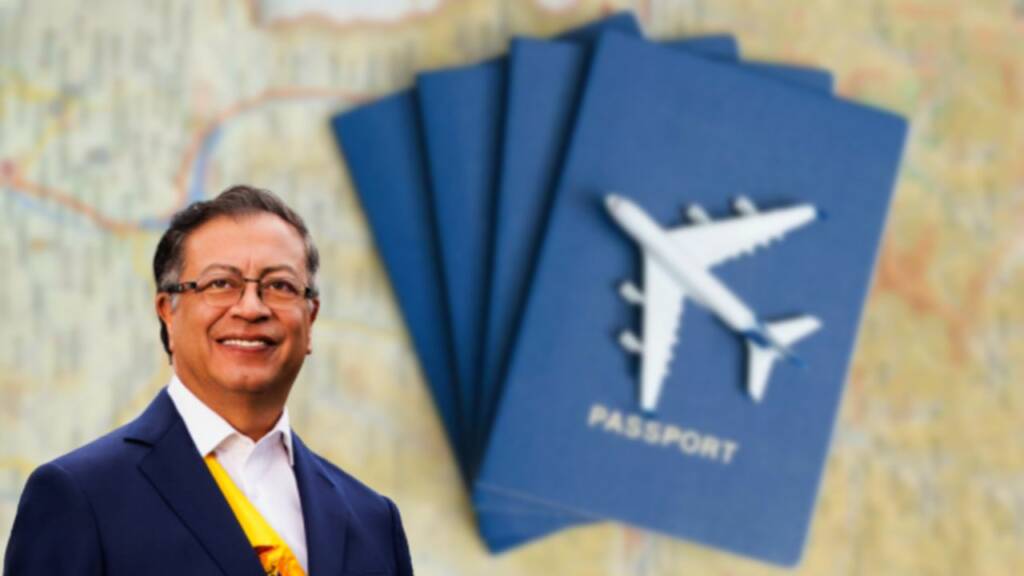Colombia Digital Visa: South America, a continent striving to be ahead of the curve in the post-Covid economic race, is seeing an increase in digital nomadism. Following in the footsteps of Brazil and Argentina, Colombia recently launched its own Digital Nomad Visa. It has some of the simplest conditions we’ve seen yet.
Colombia has successfully re-branded itself as a leading tourist destination and a major Latin American hub. Despite the fact that its natural beauty and diverse identity were once spoiled by military conflicts and widespread insecurity. It kept visitors and investors away for the majority of the twentieth century.
It is now taking yet another significant move towards reviving its Covid-ravaged economy.
Colombia Digital Visa
A digital visa, also known as an electronic visa (e-visa), is a type of visa that is applied for and issued electronically. Instead of receiving a physical visa stamp or sticker in their passport, travelers with a digital visa receive an electronic record in a database that can be accessed by immigration officials when they arrive at their destination.
Colombia’s woes
Colombia may be a little late to the party. Most of its existing competitors, including Costa Rica and neighboring Brazil, announced similar schemes favoring digital nomads months ago. Though, it’s making up for it with an offer that many will find difficult to refuse.
Eligible workers are able to set up residence in Colombia by fulfilling one simple requirement: they must have a minimum $684 in available funds monthly. That’s a far lower sum than the United States’ own national minimum wage average this year, estimated at $1,256.70.
The cost of living crisis, the surging price of fuel, and the never-ending political disputes have left workers distraught. Stateside is becoming unsustainable for many young workers. Workers now, prefer to work remotely after post-Covid era. They are now looking outward beyond their home country and joining the growing nomadism trend.
Well, lucky them, cause Colombia’s visa scheme is incredibly accessible.
High costs elsewhere
Digital Nomad Visas need $70,000 or more earnings per year elsewhere. To apply Digital Visa in Colombia, foreigners must earn a barely minuscule average of $22.80 per day. It is much less than the amount required by other places fuelling the trend. In comparison, Costa Rica wants applicants to demonstrate a monthly income of at least $3,000, which is $2,316 more than Colombia’s significantly lower request.
An important example is Europe, perhaps the most popular continent for long-term travellers due to its unparalleled cross-border connectivity. Croatia has established a minimum monthly threshold of $2,600. While Malta has raised the bar even higher, rejecting applications from travellers whose funds do not total $3,063.39 per month.
Colombia’s visa requirements are a lot easier to fulfill than those of island countries or Europe’s. Other destinations have admitted to be openly discouraging budget travel, eyeing big investors and high-spending tourists instead. Thus, Colombia is hoping to attract Europe’s shunned backpackers by removing financial barriers.
Prior to the visa being launched, Colombia was already a household name among digital nomads.The only downside? They were only allowed to remain in the country for up to 90 days. That changed after the introduction of this new visa scheme.
Read More: Brazil sets the ball of ‘De-Dollarisation’ rolling in South America
Colombia’s bustling tourism
As a general rule, when visiting as tourists, Americans and a majority of foreigners could only remain for three months. Still, there are reports of nomads renewing their temporary visas for a further three. Though that isn’t guaranteed and overstaying visas inevitably leads to legal difficulties when exiting or re-entering a country.
Once the new system was launched, however, long-term travelers wishing to linger in Colombia will no longer have to worry about the 3-month rule. They will be allowed to remain in the national territory for up to two years.
Political Will
The Colombia Digital Visa was spearheaded by entrepreneur Ilana Milkes, who founded World Tech coding bootcamps. Milkes received great institutional backing as well.
The new administration showed a clear intention to strengthen the tourism industry. “There is an acknowledgement of tourism as an important source of generation of foreign exchange in the country,” Gilberto Salcedo, vice president of tourism at ProColombia, told Skift in July last year.
Read More: US-backed Guillermo Lasso is destroying Ecuador with Albanian mafias
The vision has plenty of benefits. In 2019, tourists spent $6.8 billion in Colombia. But according to the World Travel and Tourism Council, “business tourism” which involves people attending events like congresses and conventions represented 14 percent of that. Digital nomads, Milkes argues, are able to “activate local economies” with their spending.
The country’s tourism department expects the visa to draw at least 45,000 digital nomads to the country in the next 18 months.
Unlike other digital nomad visa, Colombia includes an incentive to start a business there; implying that visa holders will be able to open a bank account there. This might be a game changer for the South American country, allowing it to emerge from its Covid-19-induced economic difficulties.
